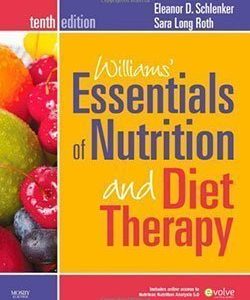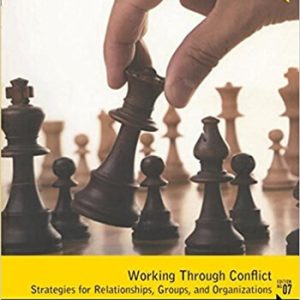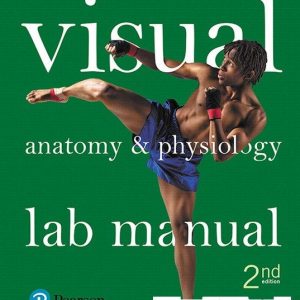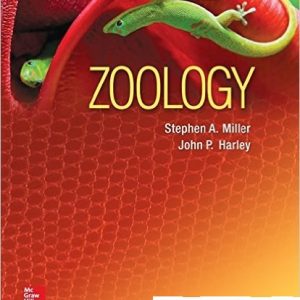Instant download Organic Chemistry 7th Edition Carey Test Bank pdf docx epub after payment.
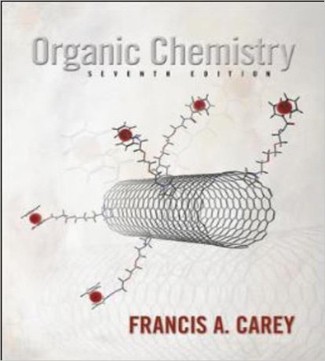
Product Details:
- ISBN-10 : 0073047872
- ISBN-13 : 978-0073047874
- Author:
Excellent Condition!
Table of Content:
Campbell Biology in Focus, 2e (Urry)
Chapter 4 A Tour of the Cell
4.1 Multiple-Choice Questions
1) When biologists wish to study the internal ultrastructure of cells, they can achieve the finest resolution by using a
A) phase-contrast light microscope.
B) scanning electron microscope.
C) transmission electronic microscope.
D) confocal fluorescence microscope.
Answer: C
Topic: Concept 4.1
Skill: Knowledge/Comprehension
Learning Outcome: 4.1
2) One advantage of light microscopy over transmission electron microscopy is that
A) specimen preparation for light microcopy does not produce artifacts.
B) light microscopy provides for higher resolving power than transmission electron microscopy.
C) light microscopy provides for higher magnification than transmission electron microscopy.
D) light microscopy allows one to view dynamic processes in living cells.
Answer: D
Topic: Concept 4.1
Skill: Knowledge/Comprehension
Learning Outcome: 4.1
3) Biologists commonly use cell fractionation to
A) sort cells based on their size and weight.
B) visualize the 3-D structure of cell membranes.
C) isolate organelles to examine their biological functions.
D) examine the distribution of organelles within the cell.
Answer: C
Topic: Concept 4.1
Skill: Knowledge/Comprehension
Learning Outcome: 4.1
4) When subcellular components from disrupted cells are separated using centrifugation, the primary factor that determines whether a specific cellular component remains in the liquid solution or ends up in the pellet is
A) the relative size and weight of the component.
B) the relative solubility of the component.
C) how hydrophobic the component is.
D) the carbohydrate composition of the component.
Answer: A
Topic: Concept 4.1
Skill: Knowledge/Comprehension
Learning Outcome: 4.1
5) When disrupted cells are spun in a centrifuge at increasingly higher speeds, which of the following correctly lists the order in which cellular components will pellet?
A) ribosomes, nuclei, mitochondria
B) chloroplasts, ribosomes, pieces of membrane
C) nucleus, ribosomes, chloroplasts
D) nucleus, mitochondria, ribosomes
Answer: D
Topic: Concept 4.1
Skill: Application/Analysis
Learning Outcome: 4.1
6) What is the primary reason that a modern transmission electron microscope (TEM) can resolve biological images as small as 2 nm, whereas 200 nm is the limit of resolution for a light microscope?
A) Diffraction of light by a light microscope distorts the image.
B) Contrast is enhanced by staining with atoms of heavy metal.
C) Electron beams have much shorter wavelengths than visible light.
D) TEM is used to visualize very thin sections of cells.
Answer: C
Topic: Concept 4.1
Skill: Application/Analysis
Learning Outcome: 4.1
Global L.O.: G2
7) What technique would be most appropriate to use to observe the movements of condensed chromosomes during cell division?
A) standard light microscopy
B) super-resolution microscopy
C) transmission electron microscopy
D) scanning electron microscopy
Answer: A
Topic: Concept 4.1
Skill: Evaluation/Synthesis
Learning Outcome: 4.1
Global L.O.: G2
8) The smallest cell structures that would most likely be visible with a standard (not super-resolution) research-grade light microscope is
A) microtubules.
B) chloroplasts.
C) ribosomes.
D) nuclear pores.
Answer: B
Topic: Concept 4.1
Skill: Knowledge/Comprehension
Learning Outcome: 4.1
9) Which of the following may be found in eukaryotic cells, but not in bacteria?
A) DNA
B) flagella
C) plasma membrane
D) ribosomes
E) endoplasmic reticulum
Answer: E
Topic: Concept 4.2
Skill: Knowledge/Comprehension
Learning Outcome: 4.2
10) Which of the following will be found in nearly all eukaryotic cells?
A) cell wall
B) mitochondria
C) chloroplast
D) nucleoid
E) capsule
Answer: B
Topic: Concept 4.2
Skill: Knowledge/Comprehension
Learning Outcome: 4.2
11) Which of the following statements concerning cells of bacteria and archaea is correct?
A) Archaea contain small membrane-enclosed organelles; bacteria do not.
B) Archaea contain a membrane-bound nucleus; bacteria do not.
C) DNA is present in both archaea and bacteria.
D) DNA is present in the mitochondria of both bacteria and archaea.
Answer: C
Topic: Concept 4.2
Skill: Knowledge/Comprehension
Learning Outcome: 4.2
12) Prokaryotes are classified as belonging to two different domains. What are the domains?
A) Bacteria and Eukarya
B) Bacteria and Protista
C) Archaea and Protista
D) Bacteria and Archaea
Answer: D
Topic: Concept 4.2
Skill: Knowledge/Comprehension
Learning Outcome: 4.2
13) Large numbers of ribosomes are present in cells that specialize in producing which of the following molecules?
A) lipids
B) glycogen
C) proteins
D) cellulose
E) nucleic acids
Answer: C
Topic: Concepts 4.2, 4.3
Skill: Knowledge/Comprehension
Learning Outcome: 4.2, 4.3
14) The nuclear lamina is a netlike array of filaments on the inner side of the nuclear membrane. If a method were found that could cause the lamina to fall into disarray, what would you expect to be the most likely immediate consequence?
A) the loss of all nuclear function
B) the inability of the nucleus to divide during cell division
C) a change in the shape of the nucleus
D) closure of nuclear pores disrupting transport of materials into and out of the nucleus
E) inability of the nucleus to keep out destructive chemicals
Answer: C
Topic: Concept 4.3
Skill: Evaluation/Synthesis
Learning Outcome: 4.3
Global L.O.: G2
15) A cell with an abundance of free ribosomes is most likely
A) producing primarily proteins for secretion.
B) producing primarily cytoplasmic proteins.
C) producing primarily cell wall or extracellular matrix components.
D) producing primarily an abundance of new membranes.
E) enlarging its vacuole.
Answer: B
Topic: Concept 4.3
Skill: Application/Analysis
Learning Outcome: 4.3
16) Which structure is the site of the synthesis of proteins destined for export from the cell?
A) smooth ER
B) lysosomes
C) rough ER
D) Golgi vesicles
E) free cytoplasmic ribosomes
Answer: C
Topic: Concepts 4.3, 4.4
Skill: Knowledge/Comprehension
Learning Outcome: 4.3, 4.4
17) Extracellular matrix proteins are produced by ribosomes in which part of a eukaryotic cell?
A) lysosomes
B) cytoplasm
C) nuclear envelope
D) Golgi apparatus
E) rough ER
Answer: E
Topic: Concepts 4.3, 4.7
Skill: Application/Analysis
Learning Outcome: 4.3, 4.7
18) The volume enclosed by the plasma membrane of plant cells is often much larger than the corresponding volume in animal cells. The most reasonable explanation for this observation is that
A) plant cells are capable of having a much higher surface-to-volume ratio than animal cells.
B) plant cells have a much more highly convoluted (folded) plasma membrane than animal cells.
C) plant cells contain a large vacuole that reduces the volume of the cytoplasm.
D) animal cells are spherical, whereas plant cells are elongated.
Answer: C
Topic: Concepts 4.2, 4.4
Skill: Evaluation/Synthesis
Learning Outcome: 4.2, 4.4
Global L.O.: G2
19) The liver is involved in detoxification of many poisons and drugs. Which of the following structures is primarily involved in this process and therefore abundant in liver cells?
A) rough ER
B) smooth ER
C) Golgi apparatus
D) nuclear envelope
E) lysosomes
Answer: B
Topic: Concepts 4.3, 4.4
Skill: Knowledge/Comprehension
Learning Outcome: 43.3, 43.4
20) Which of the following statements correctly describes some aspect of protein secretion from prokaryotic cells?
A) Prokaryotes are unlikely to be able to secrete proteins because they lack an endomembrane system.
B) The mechanism of protein secretion in prokaryotes is probably the same as that in eukaryotes.
C) Proteins that are secreted by prokaryotes are synthesized on ribosomes that are bound to the cytoplasmic surface of the plasma membrane.
D) In prokaryotes, the ribosomes that are used for the synthesis of secreted proteins are located outside of the cell.
Answer: C
Topic: Concepts 4.3, 4.4
Skill: Application/Analysis
Learning Outcome: 4.3, 4.4
Global L.O.: G2
21) Which type of organelle or structure is primarily involved in the synthesis of oils, phospholipids, and steroids?
A) ribosome
B) lysosome
C) smooth endoplasmic reticulum
D) mitochondrion
Answer: C
Topic: Concept 4.4
Skill: Knowledge/Comprehension
Learning Outcome: 4.4
22) Which of the following statements correctly describes a function of the Golgi apparatus?
A) detoxification of toxins
B) protein modification and sorting
C) synthesis of cytoplasmic proteins
D) assembly of ribosomal subunits
Answer: B
Topic: Concept 4.4
Skill: Knowledge/Comprehension
Learning Outcome: 4.4
23) The membranes of various organelles in the endomembrane display differences in their lipid and protein compositions. These differences are largely established by
A) the transport and exchange of membrane lipids among organelles of the endomembrane system by small membrane vesicles.
B) the function of the Golgi apparatus in modifying, sorting, and directing membrane components to their final destinations.
C) the modification of membrane components once they reach their final destination.
D) the synthesis of different lipids and proteins in each of the organelles of the endomembrane system.
Answer: B
Topic: Concept 4.4
Skill: Application/Analysis
Learning Outcome: 4.4
Global L.O.: G2
24) Hydrolytic enzymes must be segregated and packaged to prevent general destruction of cellular components. In animal cells, which of the following organelles contains these hydrolytic enzymes?
A) mitochondria
B) lysosomes
C) central vacuoles
D) peroxisomes
Answer: B
Topic: Concept 4.4
Skill: Knowledge/Comprehension
Learning Outcome: 4.4
25) Tay-Sachs disease is a human genetic abnormality that results in cells accumulating very large, complex, undigested lipids. Which cellular organelle must be defective in this condition?
A) the endoplasmic reticulum
B) the Golgi apparatus
C) the lysosome
D) mitochondrion
Answer: C
Topic: Concept 4.4
Skill: Application/Analysis
Learning Outcome: 4.4
Global L.O.: G2
People Also Search:
organic chemistry
organic chemistry carey
organic chemistry 7th edition carey
organic chemistry 7th edition
organic chemistry 7th edition download scribd
organic chemistry 7th edition testbank download pdf


